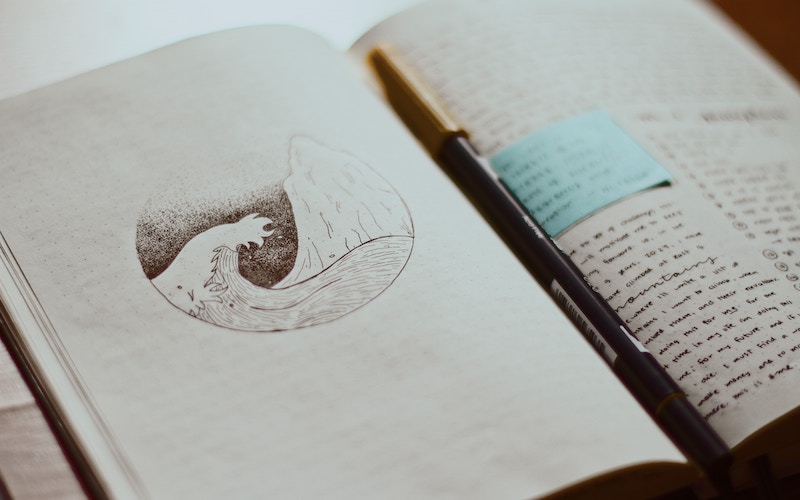Using Your Senses for Improved Recall
Episode #3 of the course How to boost your studying and test-taking skills by Valeria Shvediuk
Welcome back!
Yesterday, we discussed how to optimize your learning activities, and we covered memory-related concepts such as spaced repetition and context-dependent memory. Today, we’ll expand your memory toolbox by engaging your senses and adding another handy memorization technique.
Multi-sensory Input for Stronger Neural Connections
We process information into our memory through one of our five senses (sight, hearing, touch, smell, and taste). It turns out that our brain best absorbs information when it comes from multi-sensory (multimedia) input [1]. This can be explained by how the human brain developed in the ancestral environment: Information was regarded as more important for survival if it was received through more than one sensory stimulus simultaneously. We can use this mechanism, known as the salience principle, to help our brain perceive any information we are trying to learn as more salient (i.e., information that needs to be stored for survival) by attaching input from multiple senses. Let’s see how we can do it.
Vision is our dominant sense, which can override conflicting signals from other senses, even touch [2]—seeing is truly believing! Visual (or iconic) memory, unsurprisingly, is superior to other types of sensory memory; what you’ve seen or read is easier to recall than what you’ve only heard (so, save those audiobooks for your vacation). You can maximize this “vision superiority” effect with a simple trick. We’re much better at remembering images and pictures than words, so convert what you’ve read into a visual reference (be it a drawing, a graph, or a mind map). Feel free to use different pen colors and make your sketch conspicuous but not overly complex (as the salience principle makes sure to record the key details and ignore the rest). You can take it further by attaching a sheet of paper with your visuals to the bedroom wall—scanning it in the morning and in the evening will quickly absorb it into your memory.
Given how strong our visual sense is, should we even bother using our other senses for learning, like hearing? Absolutely! By adding auditory input to visual input, we enhance the learning experience and significantly improve recall [3]. So, don’t feel bad for watching a YouTube video that explains a concept you’re struggling with; this is indeed an effective way to learn, especially if the video contains diagrams, infographics, or other images accompanied by a voiceover.
To further strengthen the new neural connections, we can add yet another layer of sensory encoding in the form of a tactile or haptic experience. The easiest way to do this is by handwriting your study notes instead of typing them [4].
Olfaction, or the sense of smell, is arguably our oldest sense and strongly linked to memory. Ancient Greeks knew that certain scents, like rosemary, peppermint, and lemon, boost your concentration, accuracy, and memory. Recent studies support this too [5]. Why not stock up on aromatic oils? You get your room smelling nice as an extra benefit!
We best memorize what we understand and what fits into what we already know. For it to stick, connect the new information to your existing knowledge and add features to it, i.e., elaborate your existing memories [6].
Retrieval Practice and Active Recall
Active recall, as opposed to a passive review or re-reading, is key to committing something to memory. Try this retrieval practice: Take a blank sheet of paper and write down everything you remember about your study subject, then fill in any missing pieces from your study notes or a textbook. Repeat this at spaced intervals, and you’ll see how powerful this technique is!
Daily task: Take five minutes to recall the concepts you’ve learned so far in this course—write them down in words or even better, in visuals! Then fill in the gaps, if any. Repeat this exercise tomorrow and compare the results.
If you’d like to learn more memory hacks and mnemonic techniques, subscribe to the “How to improve your memory” course on Highbrow after you finish this one.
See you tomorrow, when we’ll be working on your writing skills.
Valeria
Recommended book
References
[1] Richard Mayer’s Cognitive Theory of Multimedia Learning and Research-Based Principles for Multimedia Learning
[2] Agency over Phantom Limb Enhanced by Short-Term Mirror Therapy
[3] “Chapter 7” of Brain Rules by John Medina
[4] Three Scientific Links between Handwriting Your Notes and Memory
[5] Can You Smell Your Way to a Better Brain? Science Says Yes
[6] Understanding How We Learn: A Visual Guide by Yana Weinstein, Megan Sumeracki, and Oliver Caviglioli
Share with friends

